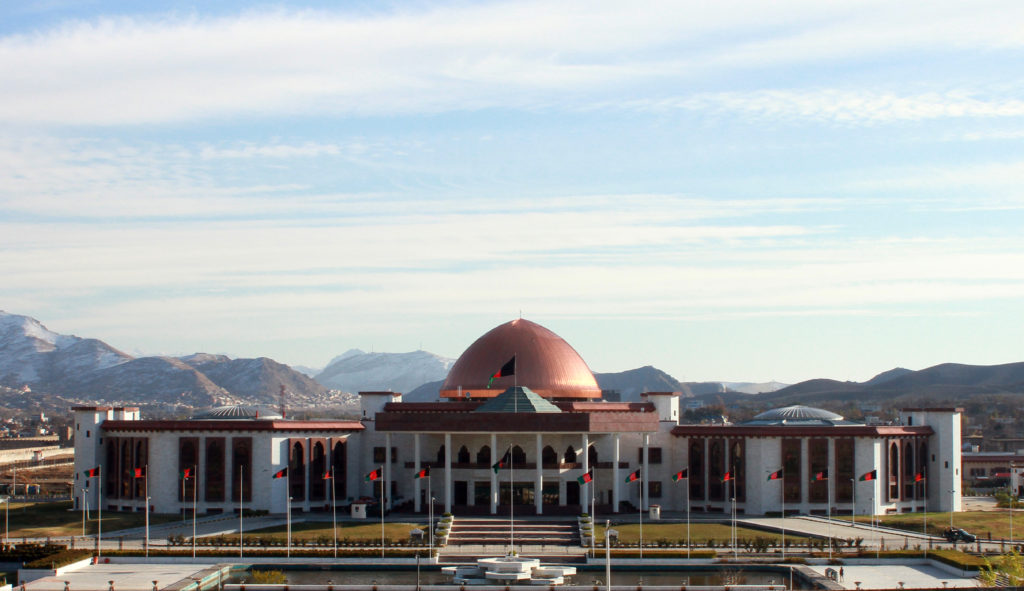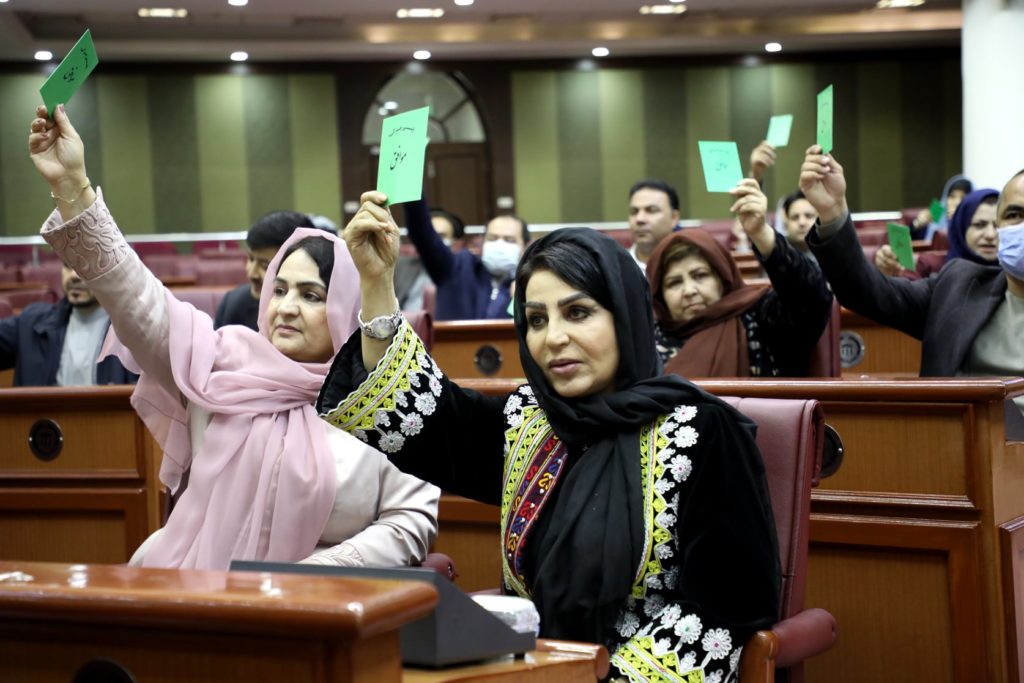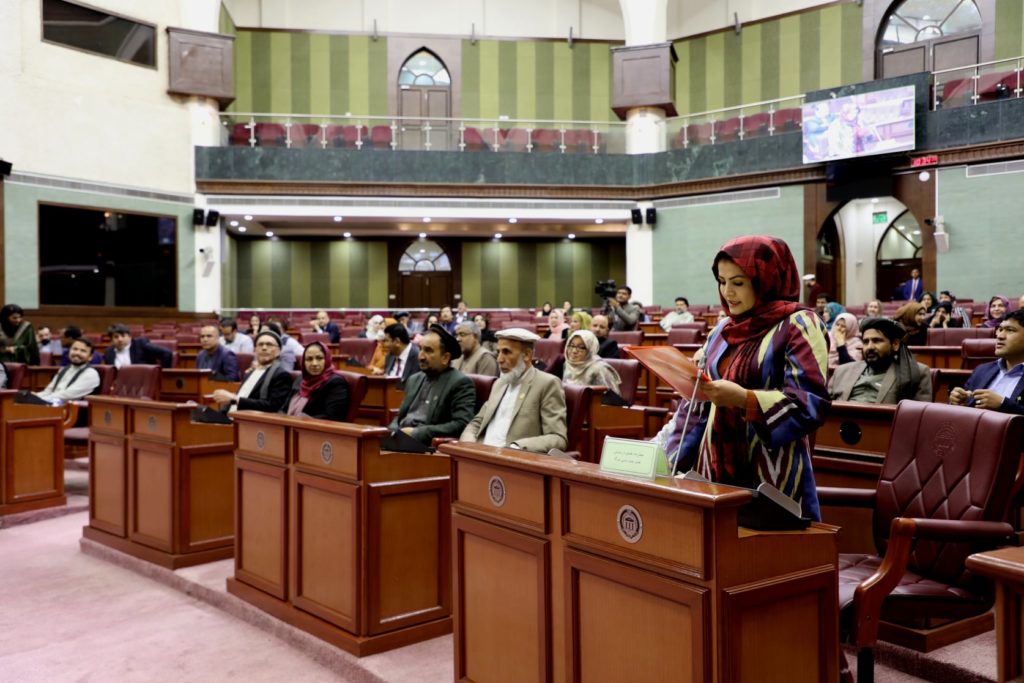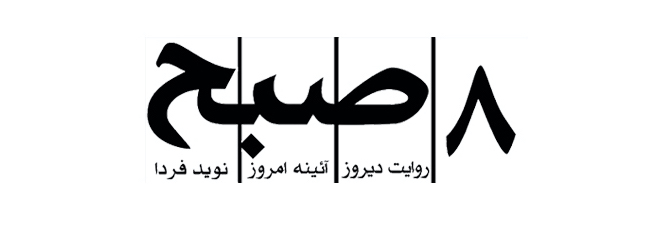How Afghan women conquered a 27% share in Parliament after decades of war

Parliament of Afghanistan during the start of First Year of the 17th Legislative Term – Credit: Naseer Kawoshgar, Hasht e Subh Daily
Women’s rights in Afghanistan have been all but stable in the past 50 years, but amid a two-decade long war, they have still managed to turn the tide back to a more equal society and gain control of a 27% share of parliamentary seats. A valuable achievement that didn’t come without considerable challenges.
By Haseeb Bahesh, Hasht e Subh Daily (Afghanistan)
Women entered the Afghan parliament for the first time five decades ago, in the often-called “decade of democracy,” which began in 1964, during the reign of Mohammad Zahir Shah and laid the foundation for modern rule in Afghanistan. Among the then King’s 216 members of parliament, only four were women, but the country’s prospects on gender equality and freedom in general were promising.
However, a peaceful coup d’état staged ten years later by Zahir Shah’s cousin, Mohammed Daoud Khan, and the following and bloodier Sowr revolution, also called the April Coup, carried by the People’s Democratic Party of Afghanistan in 1978 brought that promise —alongside the parliamentary monarchy— to an abrupt end. For about 15 years, the doors of parliament were closed for everyone. During the following successive governments, amid cultural and religious unrest, civil war and a 15-year long period of Taliban rule, they would remain closed, but only for women.
It wasn’t until after the fall of the Taliban government in 2001, that an agreement was signed at the Bonn Conference to entrust the draft of a new constitution —the eight— for the country, to the Afghan Constitutional Commission, which had 35 members. The draft stated, in its 22nd article, that Afghan citizens, both men and women, had equal rights and responsibilities under the law, and intended to guarantee the rights of Afghan women, which had been baffled over and over by the Taliban regime, often banning them from getting access to basic health care and education.
Mohammad Ashraf Rasoli, now Senior Adviser to the Afghan Minister of Justice, was a member of the commission at the time. He recalls the heated debate around this article during the Constitution’s draft revision in Parliament. « It created a lot of controversy, because there are different interpretations of Islam in this regard, » he says. The debate lasted several days. « Finally, it was decided that the citizens of Afghanistan, both men and women, have basic rights and duties before the law. Women should have equal rights under the law, because they are human beings.”

Afghan female members of the parliament in one of the parliament sessions – Credit: Afghan Parliament Media Department
The new Constitution of 2005 also included a quota of parliamentary seats destined to women, in both the House of Representatives and the Senate. « There was a lot of debate on this issue. Everyone felt that, because women in our society have suffered so much, a certain share of the seats should be reserved to them.” The move has helped Afghan women play a role in the oversight and legislative processes, and, to some extent, is paving the way for gender equality in the country. Now, the law guarantees women to hold two seats for each province in the House of Representatives — which represents a 27% share of the total seats, says local legal expert Waheed Farzayi — or one if the province only counts for two or three seats.
Regardless of this quota, which ensures a minimum female share, women could very well hold all the seats of a province, provided they win the election with 73% of the votes or more. In the last parliamentary elections, in 2018, some women received more votes than men. Women currently hold 69 seats out of 249 in the House of Representatives — a 27.7% share. Of the 102 seats in the Senate, 34 are appointed by the country’s president —, 50% of which are reserved for women. This means a larger share of parliament seats for women than in most neighboring and even some developed countries, according to the World Bank — a 6% share in Iran, 20% in Pakistan, 25% in China, 24% in Tajikistan, 25% in Turkmenistan and 32% in Uzbekistan. Only the latter has a larger share of women in parliament than Afghanistan.

A young Afghan member of the parliament – Credit: Afghan Parliament Media Department
However, some believe that without these quotas only a handful of women would run for parliament, due to the conservative nature of the Afghan society and a lack of awareness of women about their rights. « Special seats have both pros and cons, » says MP Shinkai Karukhil. “The benefit is that it’s an opportunity for women to participate in politics and gain experience. The disadvantage is that since it’s guaranteed, the women who compete may not be able to represent women’s rights activists, and may not feel responsible for women’s rights.”
A number of women’s rights activists also believe that, whilst giving women a special place in parliament is one of the greatest achievements for Afghan women in the last two decades, there are still many challenges to ensure gender parity and proper representation. « Unfortunately, there are still issues around voting for female candidates,” says Mari Akrami, head of the Afghan Women’s Network. “And the fact that not many people vote for women has an impact on women’s rights all over the country. » Rights that took decades to be gained, such as women’s 27% share in Parliament, which she now fears might be threatened by the current peace negotiations between the Afghan government and the Taliban.




